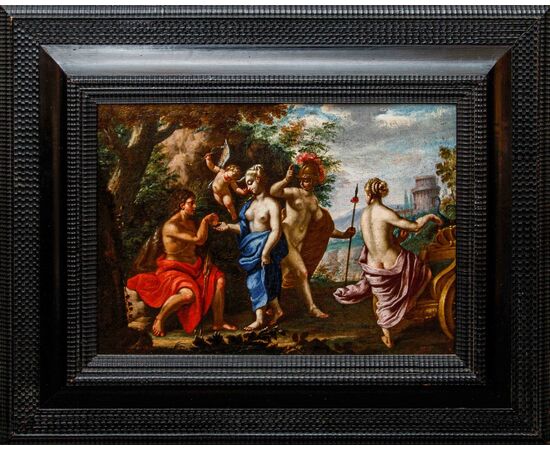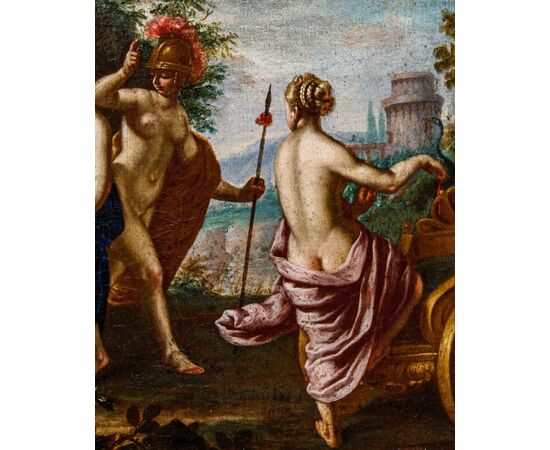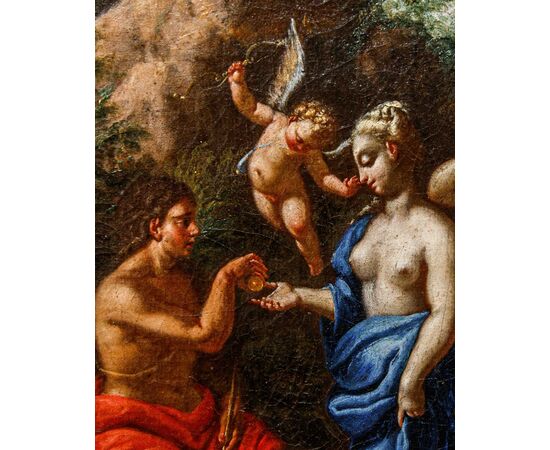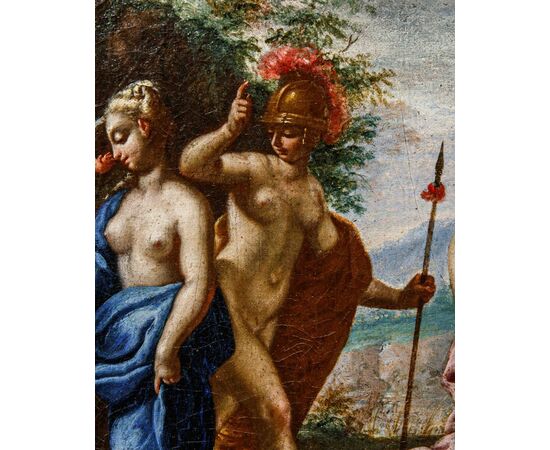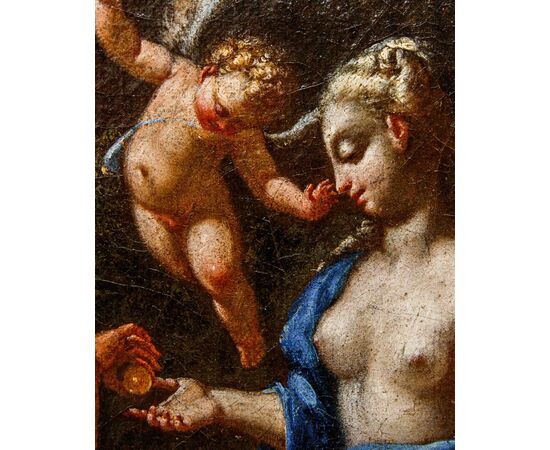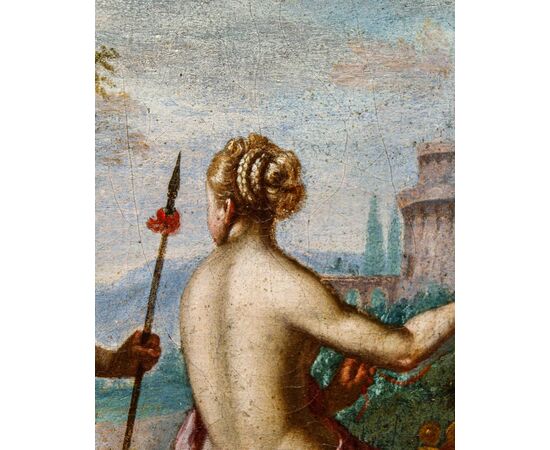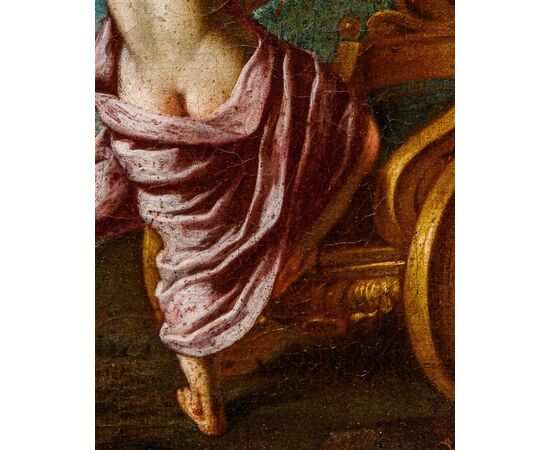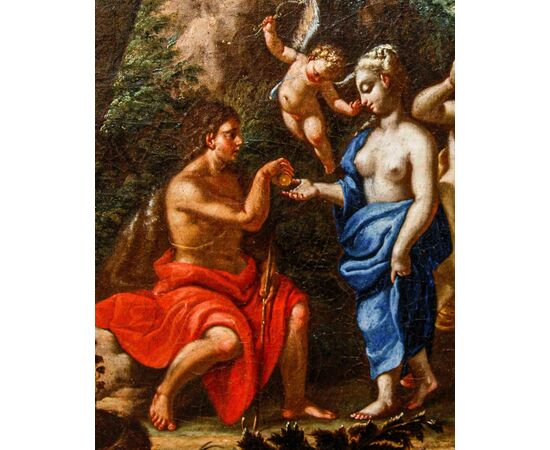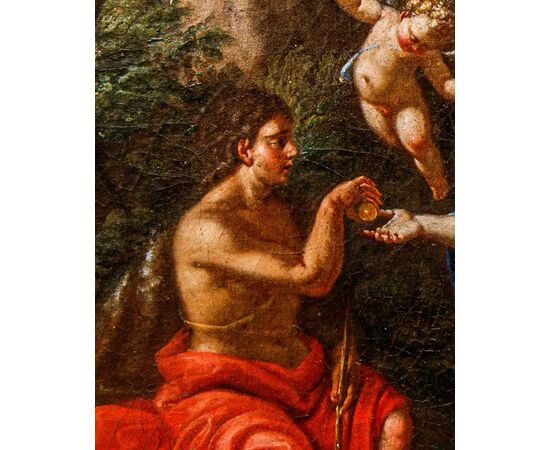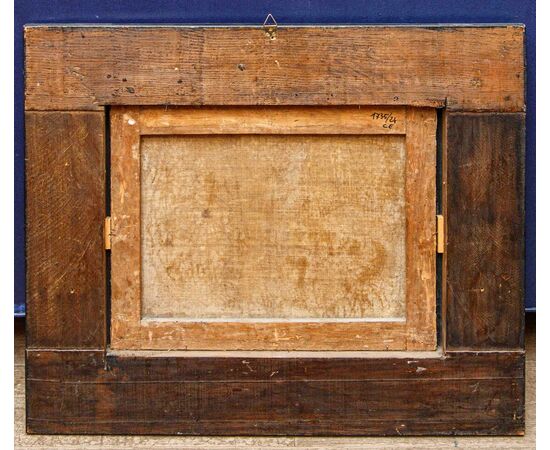Girolamo Maria Pesci (Rome, 1679 – 1759), The Judgement of Paris
Girolamo Maria Pesci (Rome, 1679 – 1759)
The Judgement of Paris
Circa 1705-1710
Oil on canvas, 47 x 36.5 cm
Girolamo Maria Pesci (Rome, 1679 – 1759), a figure distinguished by the extraordinary ability to reconcile classical rigor with the grace and lightness of the nascent Rococo, left a significant mark on the artistic panorama of 18th-century Lazio. Born in Rome, Pesci took his first steps in the workshop of the celebrated Carlo Maratta, from whom he learned the solid principles of drawing and a deep knowledge of classical art. However, his artistic sensibility soon led him to detach himself from pure Maratta-style classicism, succumbing to the charm of Francesco Trevisani's style. From Trevisani, Pesci acquired that "lightness, expressive delicacy, and marked pictorialism" that would characterize much of his production. This combination of the firmness of Maratta's drawing and the Trevisani-esque softness of color allowed him to develop a personal, elegant, and refined language that garnered much acclaim in 18th-century Rome. His activity was mainly focused on religious and private commissions. He executed numerous altarpieces for churches in various locations, including Rome, Filettino, Zagarolo, Turin, and Bassano. Among his most significant works are the Immaculate Conception with Saint Augustine and Saint John the Evangelist for the church of Santa Maria delle Grazie in Zagarolo, and several works sent abroad, such as a Madonna for Oxford and a Bath of Callisto for Wilton in England. In addition to works of a sacred nature, Pesci also dedicated himself to mythological and allegorical subjects, often intended for private collections, among which we remember, among others, a Diana and Actaeon signed and dated 1738. In this context, his style became even more intimate and decorative, enriched with landscape details, flowers, and garlands that gave the canvases a pleasant and refined atmosphere. In 1716, Girolamo Pesci was admitted as a member of the Virtuosi al Pantheon, a prestigious recognition that testifies to his growing fame and appreciation for his artistic talents. He continued to work assiduously for illustrious clients, including the Pallavicini family, for whom he created three ovals with sacred subjects for the church of Santa Balbina in Rome, and the powerful Rospigliosi family. Girolamo Pesci died in Rome in 1759, leaving an artistic legacy that well represents the transition between the Baroque and the Rococo, capable of uniting compositional solemnity with a more airy sensibility and a more luminous chromatic palette. His works are now preserved in museums and private collections, testifying to his ability to create paintings of great beauty and emotional impact.
The canvas presented here for the first time depicts the well-known mythological episode of the Judgement of Paris: the son of the Trojan king Priam is depicted giving the coveted golden apple to Venus, goddess of love and fertility, crowning her as the most beautiful goddess of Olympus, while Minerva and Juno depart discontented and embittered for not having been chosen in turn. The figures are arranged in a frieze along the horizontal format of the work, dislocated in space with a certain ease, distinguished by robust and plump anatomies, ample cloths of velvety consistency. The palette is brightened, the execution supervised and careful. Precise comparisons with recognized works by Girolamo Pesci allow us to attribute the work to him: placing it next to the ceiling for Sant'Onofrio al Gianicolo in Rome and the Baptism of Christ formerly Wannenes (May 26, 2015, lot no. 16, oil on canvas, cm 74x61), the same physiognomies recur - Venus and the allegory of Faith, Minerva with Saint John the Baptist are brought together - the plump anatomies and the rich cloths with consistent folds, of a certain plastic relief. For the references to the Maratta-style influence, I consider our Judgement of Paris an early work in the path of Girolamo Pesci, datable around 1705-1710.

